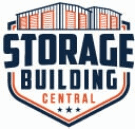Mini-storage buildings are evolving to meet the needs of commercial, business, and industrial clients. They also provide a lucrative investment opportunity for entrepreneurs, architects, commercial investors, and anyone who wants to see a solid return on their investment.
The mini-storage industry passed $30 billion in 2018, and because of its relative resistance to recession pressures, it’s expected to continue growing. Unlike other real estate rentals, the occupancy rate for mini storage facilities is much lower, with a break-even point at 40-45% occupancy. From 1994 to 2017, self-storage facilities averaged an annual return on investment of 17.43%, significantly higher than office, retail, residential or apartment spaces.
The Potential of Mini Storage Investing
With a growing population, the mini storage industry has limitless potential. On average, mini-storage units have a minimum of 8-10% cash flow annually, making it a great option for passive income for retirement, investment, and many other situations. At a time when strong commercial growth is saturating many other markets, such as restaurants or retail stores, mini storage facilities are still underrepresented, especially at a time when businesses are focusing on digitization and flexibility in their business models. Compared to other investment opportunities, mini storage buildings are also more recession-resistant, with the 2008 recession having an average -3.80% compared to industrial at -18.31%, the S&P 500 at -22.03% or retail space at -12.32%.
Mini Storage Buildings: One of the Best Investment Vehicles
Mini storage buildings are also undergoing significant changes, which make it easier for architects, investment groups, general contractors, and entrepreneurs to invest with a high probability of profitability. In land-locked neighborhoods, the ability to build multi-story structures that are climate controlled storage makes it easier to maximize potential income in high-traffic areas. As a relatively safe real estate asset, they are easy to finance, have good profitability, and the opportunity to increase cash-flow and value. Because mini storage rents are often a small portion of the renter’s overall monthly expenses, most will bear changes in rent without causing occupancy issues.
It’s Not Just for Keeping Extra Stuff Anymore!
Though mini storage buildings were originally constructed to store extra household items that were in the way, the shift in design has also created a shift in business. Many small businesses use mini storage buildings for their operations. This allows them to keep their overhead at a low rate, provides a level of freedom that can be difficult to find in business leases, and eliminates the need to purchase or maintain a security system.
Changes in business from digitization makes self-storage a great option for many companies because to keep up with the digital market requires higher degrees of flexibility and agility than ever before. The low cost and fast scalability of storage buildings make this degree of agility easier than ever before.
Don’t Hustle To Turn a Profit! Buy Mini Storage Buildings
If you’re tired of having to hustle to break-even on your real estate investments, it’s time to turn to the real estate option that doesn’t really require it. For most mini storage facilities, the break-even occupancy point is about 40-45%, while the average occupancy is closer to 87.4%. This creates a great option for high levels of profitability for a business where potential customers come to you. When recession strikes and people need to downsize their homes, they store their extra goods in a mini-storage facility, making this sector more recession-proof than most other commercial ventures.
During a recession, failure rates for multi-family homes can approach 58%, offices approach 63%, and retail space approaches 53%. By comparison, mini storage buildings only reach a failure rate of 8%, making them one of the safest long-term investments you can make. At the same time, it’s not unusual for them to realize returns well above 25% in some situations, provided that the building management and overhead are maintained. Another consideration is the difference between development vs. rental costs per square foot. Multi-family dwellings develop from $60-70 and rent for $7.50-12.00 per square foot, while mini storage facilities develop for $34-42 per square foot and rent for $$6.50-12.00 per square foot, providing a much greater profit potential.
Are you ready to invest in self-storage buildings for passive or investment income? With over 20 years of experience, Storage Building Central expertise, nationwide distribution, and quick delivery, there’s a reason why we’re one of the best. Contact us today at +1(844)315-3151 to get started.


